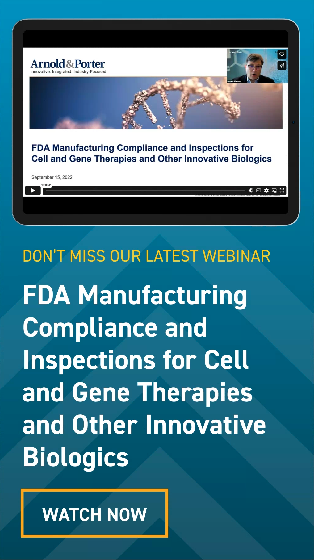“Disruption” was the common theme expressed by many panel members at this year’s Access 2025 meeting of the Association for Accessible Medicines in Amelia Island, Florida. In speaking to attendees, “I just don’t know what to expect” seemed to be the mantra of the day. The absence of FDA attendees also seemed to shake the crowd somewhat as the temporary communications “pause” lingers on.
In one of the most informative sessions, titled Healthcare Innovation and the Political Economy: The Perspective of a Former Commissioner, John Murphy III, President and CEO of AAM, had a fireside chat with former FDA Commissioner Scott Gottlieb M.D. during which Dr. Gottlieb expressed concern about the FDA layoffs and payouts to incentivize employees to leave. His concern was echoed by virtually everyone I spoke with during the meeting. As the brain drain continues at the Agency, with the retirements of many senior FDA officials, folks are worried about the status of Agency policy and the continuity of decision making. The other worries I heard expressed at the conference were centered on who will get the work done, whether industry will see an entirely new FDA focus, and, if many senior staff exit at once, how precedence in decision-making will be preserved. Some folks expressed concern about potentially having to start over just when we have an agency that is relatively transparent with regard to guidance and accessibility through meetings and controlled correspondences. These questions are obviously weighing on the minds of many in the industry.
Dr. Gottlieb also worried about the “10 for 1 rule” for regulations. For those that are unfamiliar, you must get rid of ten regulations for every new one proposed. Dr. Gottlieb noted that, based on negotiations during the first Trump administration, in reality, it ended up being more of a one for one swap! Trying to find ten outdated regulations for each new one proposed will be much more difficult and could create a problem for the FDA, which might then try to “regulate” through the issuance of guidances, placing the Agency in a tenuous position, particularly since Chevron deference has been struck down by the Supreme Court. Dr. Gottlieb expressed some concern about Chevron; however, he noted that, if the FDA is challenged on an issue where there are firm scientific or statutory grounds, the impact of losing Chevron might be somewhat mitigated. According to the former Commissioner, the question then becomes, how much pressure will the Office of Management and Budget (OMB) begin to place on the development of guidance documents and how much “deference” will the OMB give to the FDA?
Gottlieb was also worried about the chill on FDA personnel as they get called out by the administration, either on certain issues or decisions that they make. He worries how that might impact what is supposed to be an independent agency makes medical determinations based on objective scientific data, and noted that this stance has potential to impact the recruitment of highly qualified staff.
Another concern he had was for the upcoming User Fee negotiation cycle. He noted that negotiations have historically been basically between industry and the FDA. However, in the next User Fee cycle, he does not believe that the administration will stay out of the negotiations.
When Murphy asked about the influence of the Department of Government Efficiency (DOGE) on the FDA, Gottlieb noted that he believes DOGE should stay out of drug policy questions as this is not its focus.
During the second part of the morning meeting, CEOs Unplugged, a favorite session of many meeting attendees, Dr. Gottlieb acted as moderator and questioned three CEOs, Vinita Gupta, Chief Executive Officer of Lupin, Chirag Patel, President and Co-Chief Executive Officer of Amneal Pharmaceuticals, and Richard Saynor, Chief Executive Officer of Sandoz, about their perspectives. Some highlights of the discussions included Chirag Patel’s adamant pronouncement that “all generic drugs and biosimilars should be placed on Medicare formularies Tier 1 immediately after approval by the FDA.” He noted that, presently, it can take two to three years before newly approved products are placed into the most favored Tier 1. This not only costs patients money, but after investing in the development of generic and biosimilar products, manufacturers trying to generate revenue for their efforts are delayed due to the heavy rebating that brand-name firms place on their products. This disincentivizes early Tier 1 placement of newly approved generics and biosimilars on formularies.
Vinta Gupta noted that 50% of the profits are taken out of the system by PBMs, and that, along with brand rebates, guts the value of market exclusivity. Richard Saynor noted that the cost of patent litigation is escalating and the days of being fully rewarded for challenging patents has passed as rebating deeply decreases generic penetration.
We will have more for you next week but, for now, hold onto your hats as the dust has not even begun to settle on the impact of the new administration on the FDA.




